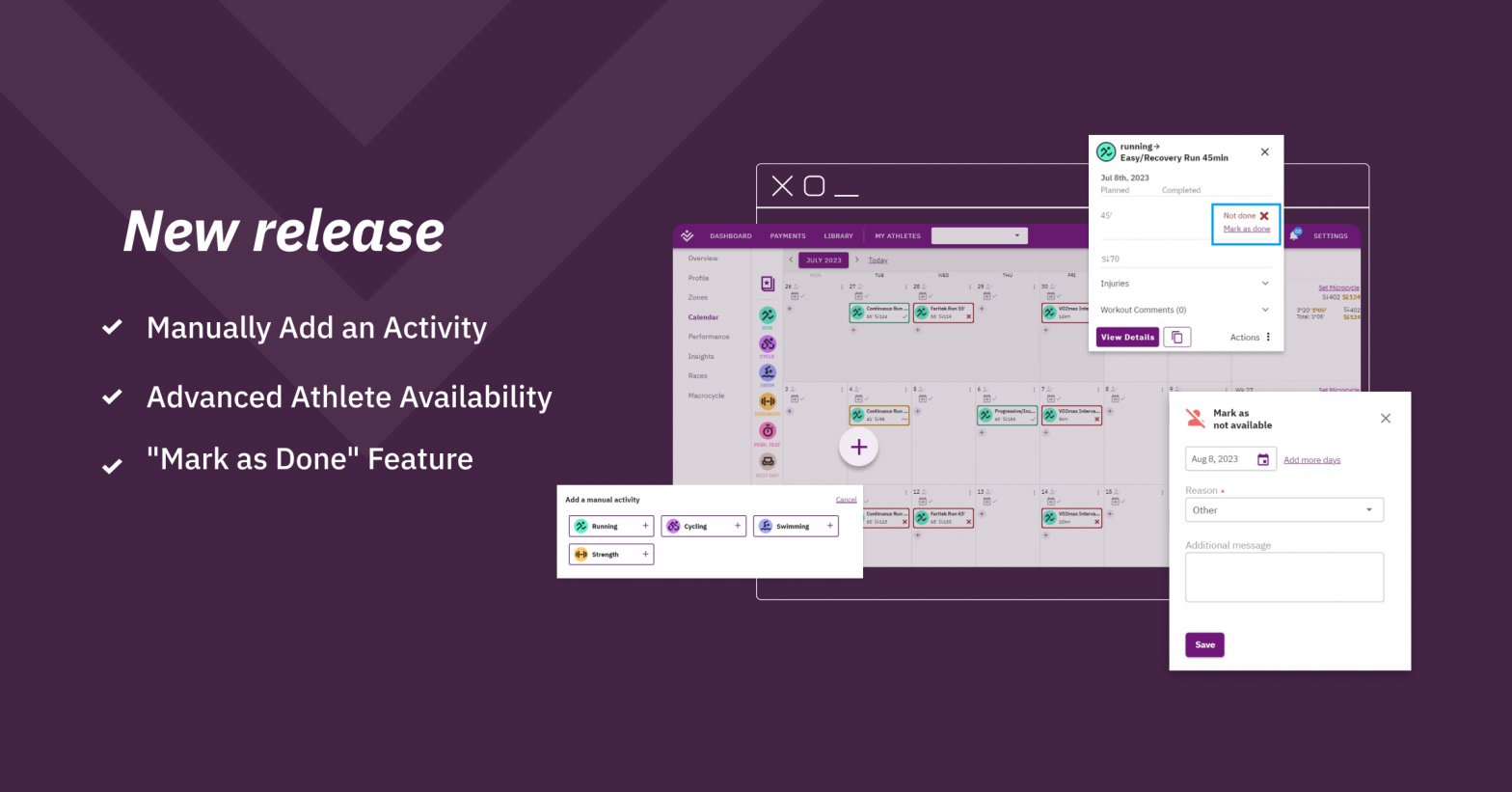Nowadays, the event of the Triathlon is increasingly expanding, constantly gaining more and more fans. Yet, upon hearing the word triathlon, many athletes often feel intimidated, and hesitate to participate. That’s probably because they automatically think of the full triathlon distance; which, indeed, is a very challenging race for most triathletes. However, the triathlon is much more than a challenge; thankfully, there are many different triathlon distances, so that every athlete can find the one that best suits them.
But, before analyzing the distances of today’s triathlon races, it’s worth taking a brief look at the origins of the event.
A brief history of the Τriathlon race
The nomenclature of the sport has ancient Greek roots, coming from the words τρεῖς (tris), meaning three, and ἆθλος (athlos) meaning competition and achievement; as it is an endurance multisport race, consisting of swimming, cycling, and running. Triathlon first appeared in France (‘Les Trois Sports’), in 1920, but the rules of the sport were actually formed in the 1970s.
The Triathlon event as we know it today, consisting of the triptych swim-bike-run, was first conceived by Don Shanahan and Jack Johnstone. The event was held at Mission Bay, San Diego, California, in 1974; and it was sponsored by the San Diego Track Club, in which, both Shanahan and Johnstone were members. For the record, the Mission Bay Triathlon comprised a 6,21 mi (10 km) run, a 4,97 mi (8 km) bike, and a 0,31 mi (500 m) swim.
When the International Triathlon Union (ITU) was founded in 1989 (Avignon, France), the first official world championships started to take place. After that, it only took a few years for the Triathlon to gain its Olympic status. Specifically, the Triathlon race was first included at the Sydney 2000 Olympic Games, Australia; since then, the tri-sport race has grown in popularity.
A triathlon distances guide for every type of athlete
The Super Sprint Triathlon
Today, there’s a variety of triathlon distances, allowing many athletes to pick a race, and make an effort. Starting from the shortest distance, there’s the Super Sprint triathlon. To elaborate, this distance consists of:
- 0.3 mi (500-meter) swim,
- 6.2 mi (10 km) bike, and
- 1.6 mi (2.5 km) run
More often than not, young athletes, who are just getting into the triathlon competition, usually choose this race.
The Sprint Triathlon
The next distance is the Sprint Triathlon race, consisting of:
- 0.465 mi (750-meter) swim,
- 12.5 mi (20 km) bike, and
- 3.1 mi (5 km) run
Having these three distances in mind, two types of athletes tend to choose this race:
- First and foremost, beginner triathletes; as the short distance of each sport is easily achievable, for an endurance athlete
- And then, athletes who like speed, and want to have fun running this distance
The Olympic Triathlon
The third distance in line is the Standard or Olympic Triathlon race; the only one, among all triathlon distances, that offers athletes the opportunity to participate in the Olympic Games. To highlight, this race includes:
- 0.93 mi (1.5 km) swim,
- 25 mi (40 km) bike, and
- 6.2 mi (10 km) run
Regarding the distances of the three sports, they allow a wide range of athletes to participate; since they require both duration, and speed. All in all, this is a race where not-so-experienced athletes can also participate in, and enjoy it.
The Half-Distance Triathlon
One of the most popular triathlon distances is, of course, the Half-Distance — or 70.3 — Triathlon. At this event, athletes are required to compete in:
- 1.2 mi (1.9 km) swim,
- 56 mi (90 km) bike, and
- 13.1 mi (21.1 km) run
Endurance athletes who mainly choose to compete in this triathlon, range from not-so-experienced to full-on experienced; as, most athletes, consider participating in this race at least once in their lives.
The Full Distance Triathlon
At the top of the triathlon distances pyramid is, of course, the Full Distance Triathlon event. Athletes who take part in this race, compete in:
- 2.4 mi (3.8 km) swim,
- 112 mi (180.2 km) bike, and
- 26.2 mi (42.2 km) run (equivalent of a full Marathon run)
A touching Full Distance throwback: Who can forget when a father, Dick Hoyt, completed the Ironman race along with his son, Rick, who had mobility problems? This father’s love and spirit inspired many athletes who dreamed of participating in this event, to make it happen. And, as time goes by, even more athletes decide to compete in Full Distance Triathlon.
Although all triathlon distances are demanding, the Full Distance is the ultimate test of strength and endurance; since they must complete three very challenging sports, in the same race — and without rest.
4 Common issues in preparing for a Triathlon race
The truth is that triathlon distances require careful planning and well-structured training. Yet, often, athletes fall into certain slip-ups, when training for a triathlon race. The most common of them, include:
1. Omitting brick training
When competing in a triathlon distance, athletes need to prepare both body and mind for the demands of the race. Brick workouts help towards this direction, by providing them with the right stimuli for transitioning quickly, and smoothly.
2. Overtraining
If anything, training for triathlon distances takes discipline, and dedication. Only, sometimes triathletes — being highly motivated athletes — overapply themselves. That especially goes for athletes who don’t follow a well-planned training routine; ideally, created by a professional endurance coach. As a result, they get overtrained, feel fatigued, and soon, decreased motivation — and even injury — follows.
3. Avoiding rest and recovery
It is scientifically proven that rest periods rejuvenate both body and mind. That’s why recovery days are crucial when preparing for triathlon distances. When triathletes don’t rest adequately, nor get enough sleep, their bodies simply cannot get through the impact of training. So, as a rule of thumb, every athlete should give their bodies time to recover; in order to perform to the maximum, come race day.
4. Not preparing for transitions
As mentioned, when it comes to triathlon distances, transitioning quickly — and smoothly — is crucial for staying focused on the day of the race. This will also save them valuable time — it is a competition, after all. If athletes don’t practice their swim-to-bike, and bike-to-run transitions, they will probably get entangled in the panic of the moment.
Triathlon distances? — TL;DR
To conclude, the distances of the triathlon events vary considerably; nonetheless, this very fact provides endurance athletes of all styles, and from all walks of life, with the opportunity to test their abilities, in the race of their choosing. Thus, they can set their own goals for their future course in the triathlon distances field.
On the other hand, like all endurance activities, training for a triathlon race is a long-term process, where the athlete is required to follow a customized program to improve their performance. That’s why trusting in an endurance coach is essential when competing in triathlons — among other sports.
What’s more, beyond the physical preparation, an athlete needs to be mentally prepared for the triathlon challenge, as well. Given the fact that triathlons are tough races, a triathlete should also learn to strengthen their mind, if they are to conquer the demanding triathlon distances.


